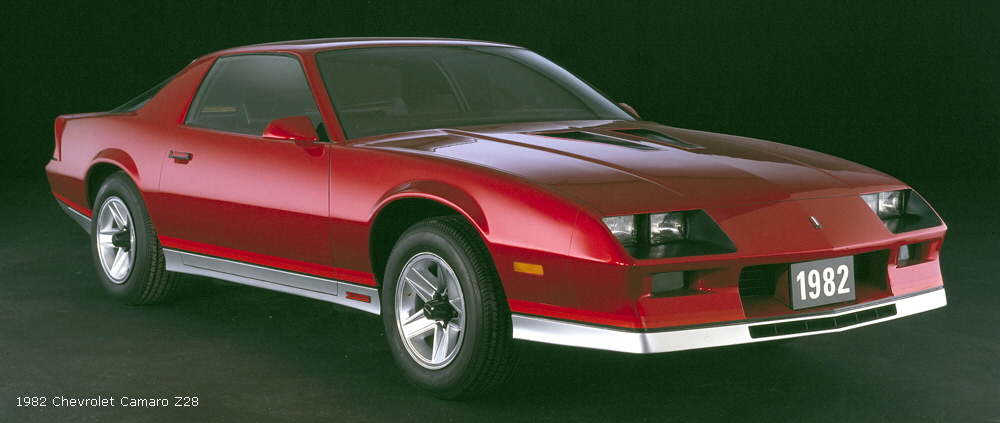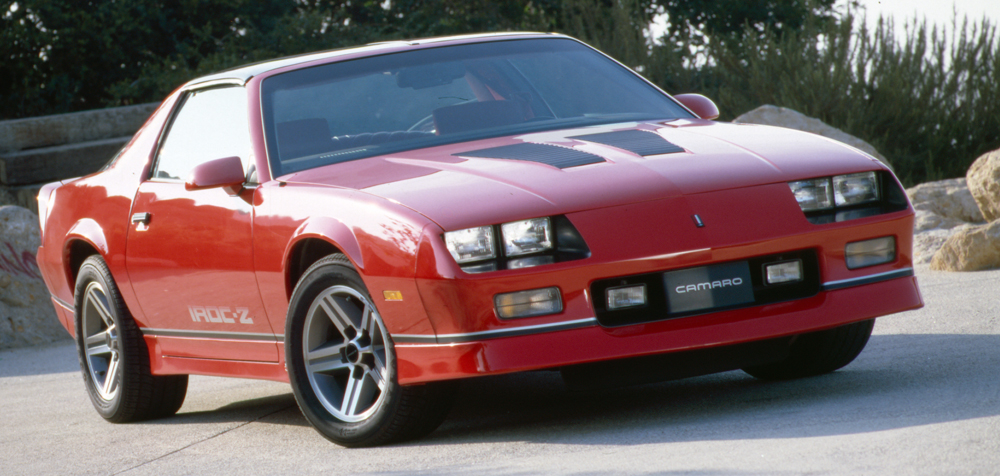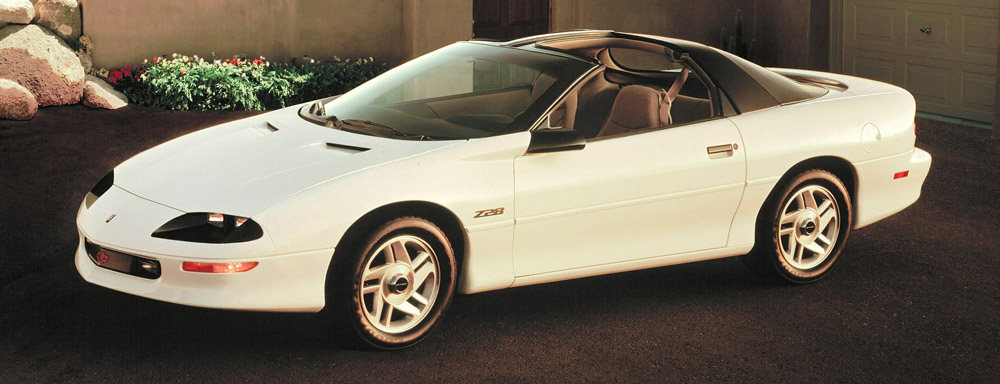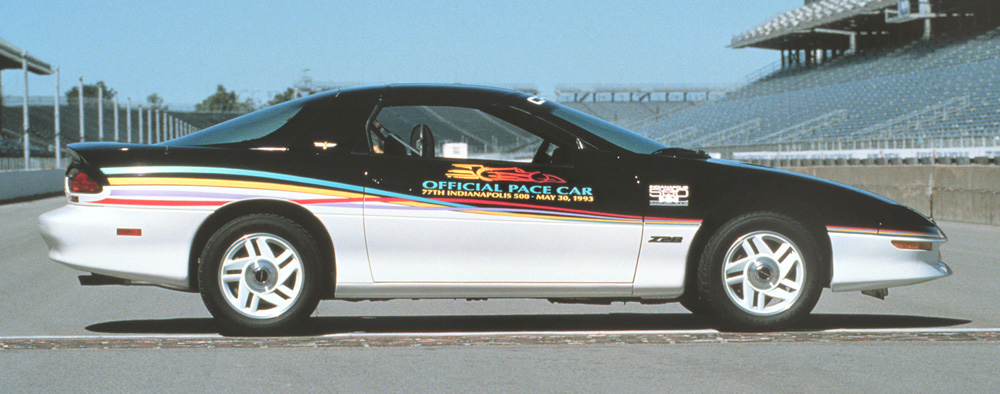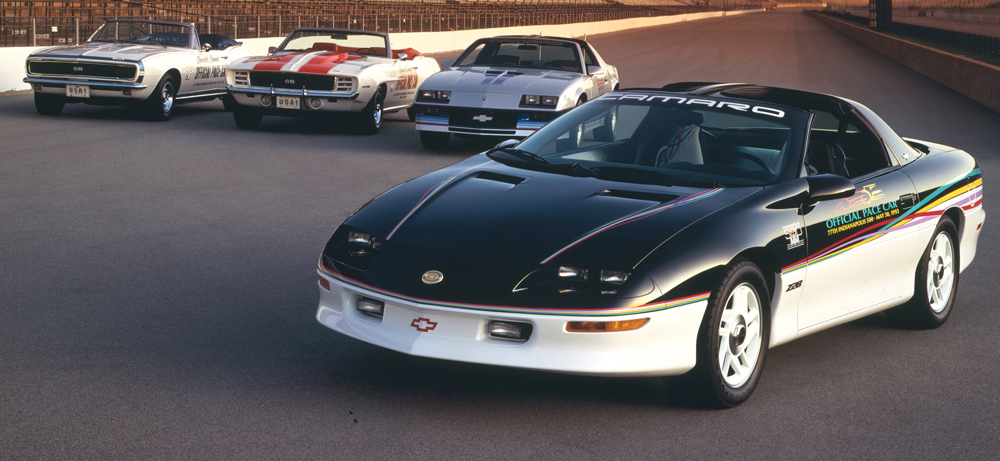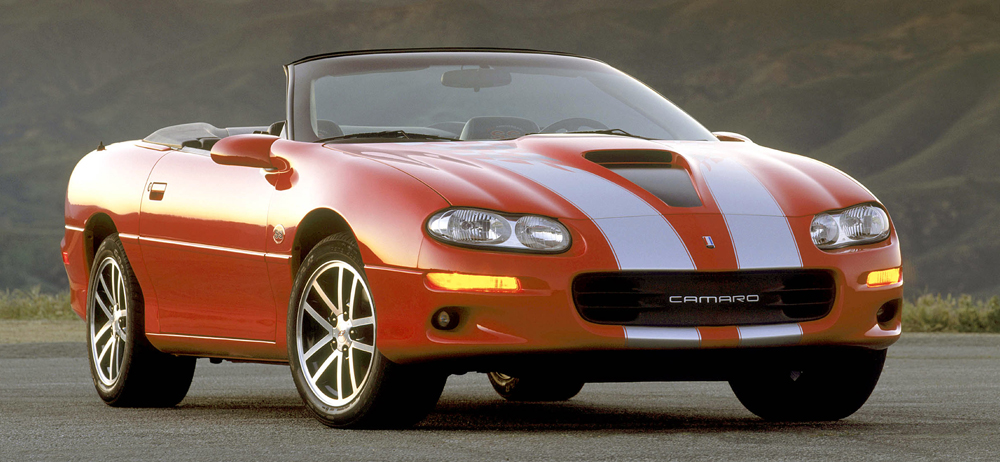|
|
|
The third-generation Camaro was the first Camaros to offer modern fuel injection, Turbo-Hydramatic 700R4 four-speed automatic transmissions, five speed manual transmissions, 16 inch wheels, a standard 4-cylinder engine,[9] and hatchback bodies. The cars were nearly 500 pounds (227 kg) lighter than the second generation model. The IROC-Z (the IROC stands for International Race of Champions) was introduced in 1985 and continued through 1990. In 1987, the L98 5.7 L V8 engine became an option on the IROC-Z, paired with an automatic transmission. The "20th Anniversary Commemorative Edition" was offered in 1987, as well as a "25th Anniversary Heritage Package" in 1992 that included a 305 cu in (5.0 L) High Output engine. Beginning in 1988, the 1LE performance package was introduced, optional on street models and for showroom stock racing in the U.S. and Canada. The B4C or "police" package was made available beginning in 1991. This basically created a Z28 in more subtle RS styling.
The fourth-generation Camaro debuted in 1993 on an updated F-body platform as a coupe only. It retained the same characteristics since its introduction in 1967: a coupe body style with 2+2 seating (with an optional T-top roof) or convertible (introduced in 1994), rear-wheel drive, and a choice of V6 and V8 engines. The standard powerplant from 1993-1995 was a 3.4 liter V6. A more powerful 3.8 liter V6 was introduced as an option in 1995 and made standard in 1996. The LT1 V-8 engine, which was introduced in the Corvette in 1992, was standard in the Z28. Optional equipment included all-speed traction control and a new six-speed T-56 manual transmission; a four-speed automatic transmission was also available. Anti-lock brakes were standard equipment on all Camaros. The 1997 model year included a revised interior, and the 1998 models included exterior styling changes, and a switch to GM's aluminum block LS1 used in the Corvette C5. The Camaro remained in production through the 2002 model year, marking 35 years of continuous production. Production of the F-Body platform was stopped due to slowing sales, a deteriorating market for sports coupes, and plant overcapacity 1993 Chevrolet Camaro Z28 Introduced for 1993 as a coupe, the fourth-generation Camaro featured completely new styling with a low, aerodynamic look. A convertible followed for 1994. The '93 Z28's LT-1 small-block V-8, first seen in the 1992 Corvette, was rated at a respectable (for the era) 275 horsepower. A specially detailed Camaro Z28 paced the 1993 Indianapolis 500, marking the brand's fourth appearance in that role. Only 645 1993 Z28s were built with the colorfully pinstriped Indy Pace Car package. Look for: Z28 badge above body-side molding and on rear panel. Special black roof treatment on all Z28s (and base Camaro with T-tops). 1993-only Z28 Indy 500 Pace Car Package.
(below) 2002 Chevrolet Camaro SS 35th Anniversary
|
|
